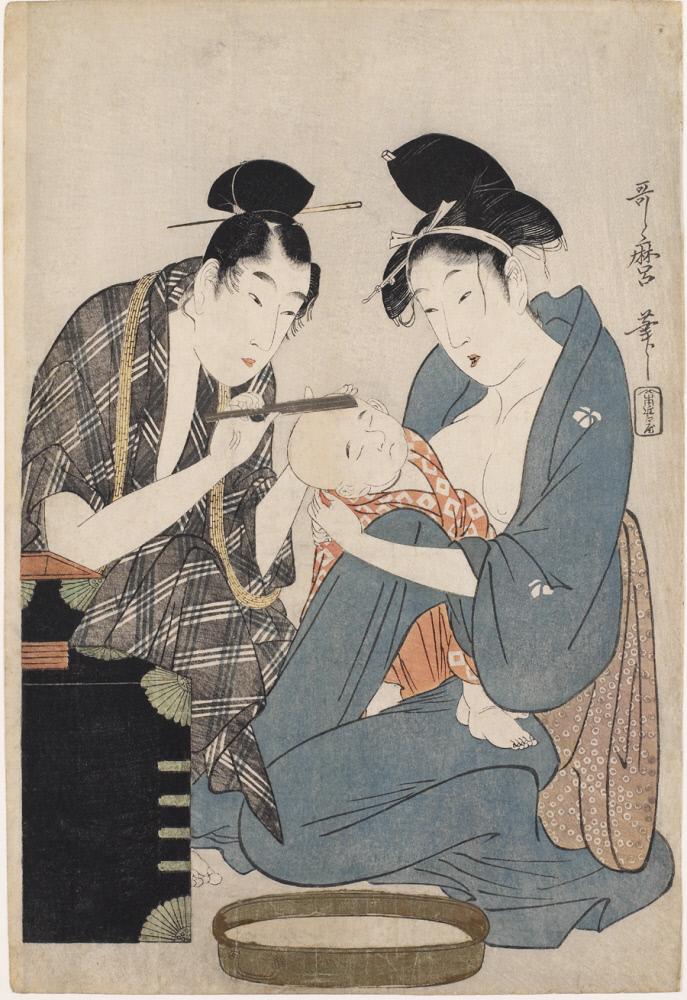The Power of an Infant

Kitagawa Utamaro (1753–1806), “Shaving the Head”, Japan, Edo period (1615–1868), c.1801. Woodblock print; ink and color on paper. Gift of James A. Michener, 1957 (13786)
Throughout Asia in the early 19th century, a child’s earliest hair—his “fire hair”—was shaven off as a traditional Buddhist custom. The practice seems to have evolved in different ways across Asia. In Thailand, it takes place at the conclusion of a child’s first month, while in Japan, it occurs on the evening of the child’s seventh day. Based upon the belief that all sentient beings are reincarnated, the event is intended to purify a baby of bad luck originating from his or her previous life. The parents also name the child at this time, and for that reason, in Japan it is called the Seventh Night Naming Ceremony (Oshichiya Meimeishiki).
Many ukiyo-e woodblock prints depict adults in states of carefree revelry. The mood of this work, however, is radically different. The parents’ faces seem to radiate with compassion and realization of their responsibilities as caregivers. The composition of the image further reinforces such an interpretation. The arched backs of mother and father form a perfect circle, the fulcrum of which is the face of their sleeping infant. The child has literally become the center of their world.
Like other depictions of children in Japanese art, Utamaro’s print seems to reflect upon a fundamental paradox of child rearing: an infant, because of its small size, fragility, and powerlessness, pulls at our heartstrings, requires our undivided attention and care, and thereby becomes the ruler of his or her domain. Long live the infant monarch!
Kitagawa Utamaro (1753–1806)
Shaving the Head
Japan, Edo period (1615–1868), c.1801
Woodblock print; ink and color on paper
Gift of James A. Michener, 1957 (13786)
– Stephen Salel, Robert F. Lange Foundation Curator of Japanese Art
6.29.2020